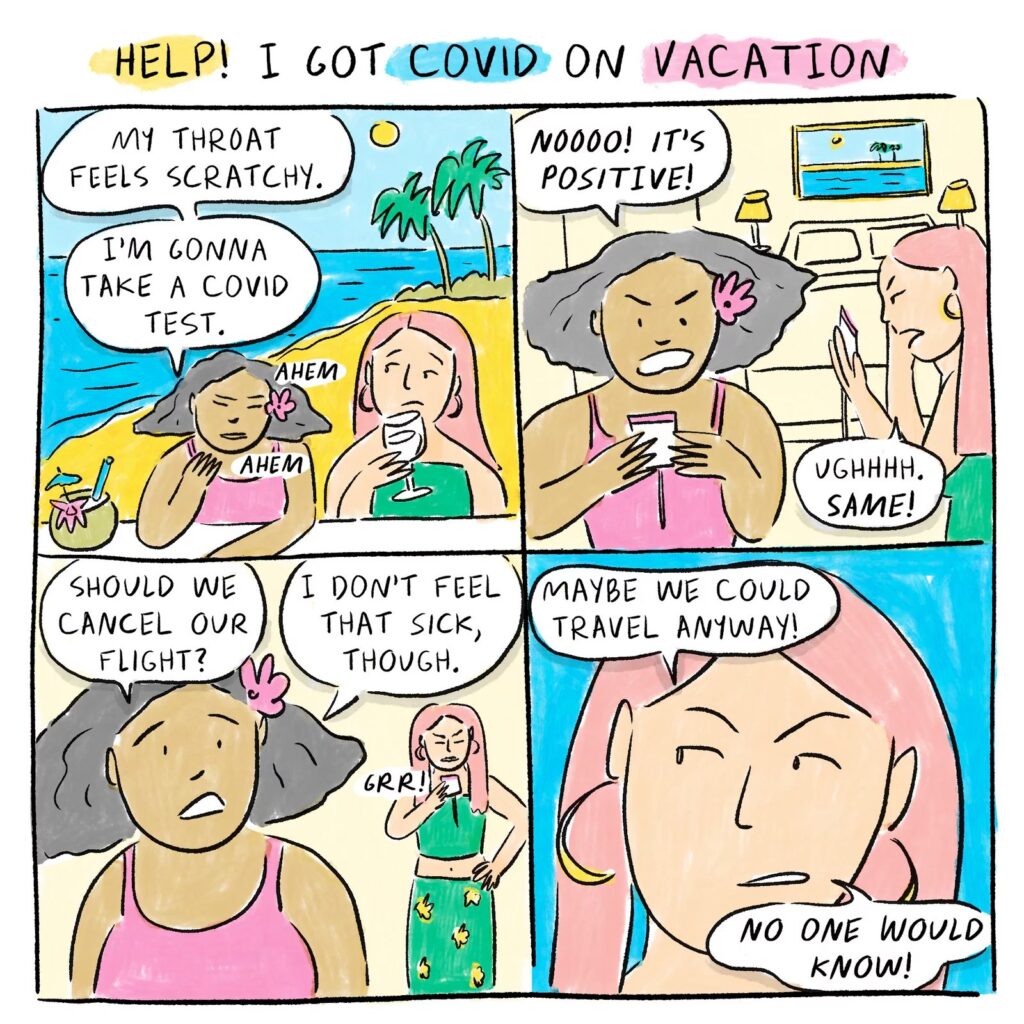The “Summer of BA.5” is here (with apologies to Bryan Adams).
BA.5 is better at evading existing immunity than even the super sneaky original Omicron variants. If you’re like us, you’re hearing of more COVID-19 infections than ever in your social circles, especially people who are traveling.
We *totally* understand the urge to travel and make up for lost COVID time. Seeing family, friends, colleagues, and the big, wonderful world out there is something to cherish. Fully vaxxed people who are not immunocompromised are highly protected from severe COVID disease, unlike the first year of the pandemic. Travel in the time of Corona remains a judgement call, and reasonable people can arrive at different decisions based on their individual situation and risk tolerance.
But given that we are in a surge, infections while traveling are going to happen. Besides disrupting vacations, being away from home complicates the best course of action if you fall sick (which would be to stay home and isolate for the duration).
❓So, what’s a COVID-19 positive traveller to do?
Here are our top tips: (adapted from Goats & Soda, link to full story below):
➡️ Prepare for COVID before the trip starts:
• Pack rapid tests and high quality (N95 or KN95) masks.
• Make sure you have easy access to your online medical records (Paxlovid prescriptions require certain checks for medication interactions).
• If you’re eligible, get boosted before your departure. Infections can still happen but boosting lowers the chances.
• Check to see if your destination country has any COVID testing requirements for arrivals or departures.
• Be prepared financially. Anticipate a potential need for additional nights at a hotel, flight changes, and unexpected health-care costs. If going out of the country, consider travel insurance.
• If you know anyone at your destination, touch base with them before departing. They could be your guardian angel if needed.
⁉️ What if I get a positive test?
➡️ Ideally, whether home or away, your goal should be to avoid infecting others.
On the safe side, this means isolating for at least 10 full days after your symptom onset or positive test. Exiting isolation only after a negative rapid test provides an extra layer of security that you are no longer contagious.
😣 Unless this is the very beginning of a long vacation in a remote cabin, this will put a serious wrinkle in any travel plans.
If you can stay put (extend your lodging, or isolate at the home of family or friends), that is first best for reducing the risk of spreading COVID-19 to others.
If you qualify, try to get a Paxlovid prescription to reduce your risk of hospitalization. Time is of the essence here, as treatment needs to be started within the first 5 days of illness. For a Test to Treat locator in the US see here.
If you must pick up the prescription yourself, WEAR a KN95 or N95 MASK!
If it’s necessary to get home sooner, avoiding travel in the first several days when you are likely to be most contagious (and feeling ill) is still advisable. After 5 days, use of an N95 or KN95 mask around others is strongly advised. Driving (contact-free) rather than flying is one possible adaptation that can minimize unnecessary exposure to others. (Though the fact that not everyone will make this choice is justification enough for continuing to mask up on flights).
Bottom line: We know this is a tricky situation for many and compromises are sometimes made.
Whatever you do, look after your own health AND PLEASE consider how your actions may affect others with whom you come in contact. That person sitting next to you on a plane (or their family at home) might have a vulnerability to severe COVID that you don’t know about.
So, as we do our best to make the most of another COVID summer– take care of yourself….and each other 💗.
Love,
Those Nerdy Girls
Full story from NPR Goats and Soda



